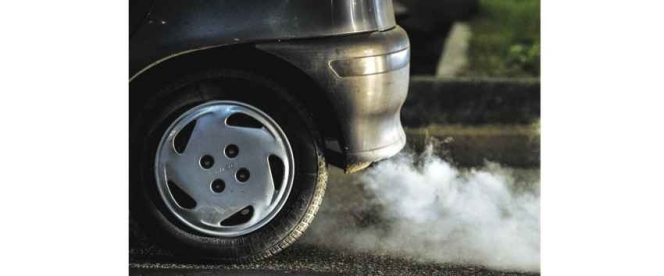
Vehicle-related particulate matter (PM) emissions may arise from both exhaust and non-exhaust mechanisms, such as brake wear, tyre wear, and road pavement abrasion, each of which may be emitted directly and indirectly through resuspension of settled road dust. Several researchers have indicated that the proportion of PM2.5 attributable to vehicle traffic will increasingly come from non-exhaust sources. Currently, very little empirical data is available to characterise tyre and road wear particles (TRWP) in the PM2.5 fraction. As such, this study was undertaken to quantify TRWP in PM2.5 at roadside locations in urban centres including London, Tokyo and Los Angeles, where vehicle traffic is an important contributor to ambient air PM.
The sources of PM2.5 vary spatially with long-range transport sources generated mainly from secondary PM and local sources generated mainly from combustion processes associated with industrial operations and road transport. A recent literature review of various PM2.5 local source apportionment studies conducted in 51 different countries concluded that 25% of urban ambient air pollution from PM2.5 is contributed by traffic, 15% by industrial activities, 20% by domestic fuel burning, 22% from unspecified sources of human origin, and 18% from natural dust and salt. Both primary and secondary PM were accounted for in the analysis and the contribution was dependent on the source. For example, the researchers generally apportioned traffic sources by primary PM emissions and the unspecified sources of human origin based on secondary PM emissions. PM2.5 also varies spatially and temporally.
Over the last 20 years, environmental agencies worldwide have enacted regulations, including those for motor vehicles, in an effort to reduce the emissions of PM2.5; and, indeed, a decline is observable in areas with established monitoring networks. For example, in the US, from 2000 to 2016, the nationwide levels of PM2.5 have decreased 42%; with the vast majority of the measurements below the national standard of 12 μg/m3 since 2012. In Europe (EU-28), the emissions of primary PM2.5 decreased by 16% from 2003–2012.
Vehicle-related PM emissions may arise from both exhaust and non-exhaust mechanisms, such as brake wear, tyre wear, and road pavement abrasion. Several researchers have indicated that the proportion of vehicle traffic attributable to PM2.5 will come increasingly from non-exhaust sources, due to additional regulations limiting vehicle exhaust emissions. The current and future contributions of non-exhaust sources have been evaluated primarily through indirect methods such as various receptor-modelling approaches or air dispersion modelling paired with emission inventories. A recent literature review of non-exhaust emissions reported more than 250 estimates of contribution to ambient air PM.
When tyres interact with the roadway surface, tyre and road wear particles (TRWP) are produced, containing both the tread rubber and embedded road material.
The contribution of tyre wear to ambient PM10 and PM2.5 has been estimated to be between 0.8–8.5% and 1–10% by mass respectively, although the data are sparse and most estimates are indirectly calculated with only a few observational studies. Given the complex composition of the TRWP, a variety of analytical techniques have been proposed, but the only ones with sufficient specificity to the particles are chemical markers associated with the tread rubber, which include monomers styrene and 1,3-butadiene, as well as the dimers vinylcyclohexene and dipentene. Given the predicted increases in non-exhaust emission contributions to PM2.5, the current study was undertaken to measure levels of TRWP in PM2.5 in urban environments where traffic-related PM is significant. Sample locations were chosen to be representative of likely human exposure in various roadside microenvironments. To facilitate comparison to our earlier work and estimates published by others, we present mass-based concentrations and relative contribution to PM2.5 for both TRWP and tread for each sampling location.
Materials, methods
To select the cities for inclusion in this study, data were assembled for large urban areas in Europe, Asia, and the United States. A selection matrix was developed to identify cities based on several criteria including, levels of ambient PM2.5, traffic loads, population density, and local regulatory actions to reduce PM2.5.
In Europe, five cities were considered, including Barcelona, London, Milan, Paris and Rome, with London being ultimately selected. In Japan, six cities were considered, including Nagoya, Osaka, Tokyo, Saitama City, Yokohama, and Kyoto, with Tokyo being ultimately selected. In the US, three cities were considered, including Atlanta, Los Angeles and New York City, with Los Angeles ultimately selected.
Within each city, the site selection criteria included the presence of identifiable traffic and historical presence of high PM2.5 levels where possible. All air samples were collected near the roadside, and the distance from road was dictated by logistical constraints such as security of the equipment and available power sources. For London only, an urban background site was also included.
The analytical technique is based on the characteristic fragments generated by the thermal decomposition of the tyre tread polymers that include styrene butadiene rubber (SBR), butadiene rubber (BR) and natural rubber (NR). Briefly, the method consists of the following steps: the tread rubber polymers in environmental samples undergo thermal decomposition at 670 °C by Curie-point pyrolysis; next, the thermal decomposition products are separated using a gas chromatograph (GC); and finally, the pyrolysis fragments are quantified with mass spectrometry (MS).
The data were evaluated using the Analysis of Variance (ANOVA) and regression models to identify differences among the cities and trends in determinants of TRWP concentrations between sampling locations and cities.

Results
In total 80 samples were analysed, and the TRWP detection frequencies ranged from 0–100%. The lowest detection frequencies were recorded in Los Angeles, with four of the six locations showing no detections. The total ambient PM2.5 levels were low in Los Angeles during sampling days, which was surprising due to the historical levels recorded in the area for the same time of year.
The TRWP made a small contribution to total ambient PM2.5 levels, representing 0.1–0.68% of the total PM2.5 across all locations. The range of concentrations of TRWP were 0.012–0.29 μg/m3 in London, 0.010–0.1 μg/m3 in Tokyo, and 0.004–0.072 μg/m3 in Los Angeles. The highest concentrations were recorded at the Blackwall Tunnel Approach in London (mean 0.104 μg/m3 and range (0.03–0.29 μg/m3)) where significant braking activity occurs before the tunnel portal which creates more tyre wear abrasion than constant speed driving.
The highest TRWP PM2.5 concentration measured in Tokyo was at the Kawasaki Industrial Road location, which had the highest traffic count of the Tokyo sites. In both Tokyo and London, the traffic composition was dominated primarily by passenger car and light duty vehicle traffic, with truck traffic generally comprising less than 20% of the total traffic. One exception was Kawaskai Industrial Road, where the truck traffic accounted for nearly 43% of the traffic.
Uncertainties
The data generated from this research provide an initial observation of TRWP in PM2.5 using methods that are specific to tyre tread, however, they are site specific and may not be applicable more broadly given the small sample size and consequent low statistical power. The calculation of the TRWP concentration involves the assumption of 50% of the polymer in the tread and 50% of tread in the TRWP. However, the 50% assumption of tread in the TRWP is based on the characterisation of bulk TRWP in the size range of 0–150 μm. As such, the composition of the <10 μm fraction has not been specifically characterized.
It is currently unknown if the use of the 50% tread assumption overestimates or underestimates that composition in the <10 μm particles. Previously, the tyre wear contribution to the PM2.5 fraction was evaluated using Aerosol Time-of-Flight Mass Spectrometer (ATOFMS) and the researchers concluded that there was both a pavement and tread component, although the researchers did not have a quantitative estimate of the amounts. More recently, roadside airborne particulate in the 10–80 μm range was characterised using SEM EDX and the researchers concluded that the amount of pavement encrustation of the surface area of the ‘tyre core’ (i.e., tread) ranged from approximately 10% to more than 50%. As such, more research may be needed to refine TRWP composition in the PM10 and PM2.5 fractions.
- Yokohama Rubber
- GEOLANDAR X-AT
- All-Terrain Tyres
- Racing Tyres
- FIA Extreme H World Cup
- Hydrogen-Powered Motorsport
Yokohama Rubber To Power FIA Extreme H World Cup With GEOLANDAR Tyres
- By TT News
- September 12, 2025

The Yokohama Rubber Co., Ltd. has been selected as the official tyre supplier for the groundbreaking FIA Extreme H World Cup, the world's first hydrogen-powered motorsport series. The company will supply its GEOLANDAR brand of tyres for the championship, which is scheduled to commence next month in Saudi Arabia. The company will also continue to supply GEOLANDAR tyres for the Extreme E off-road electric vehicle series, which holds its final event on 4–5 October in Saudi Arabia.
Central to both the Extreme H and Extreme E series is a shared mission to advance sustainability and equality. The championships serve as dynamic platforms to promote environmental awareness and demonstrate cutting-edge technologies while also enforcing a strict mandate for gender parity by requiring each team to field one male and one female driver. The Extreme H series will feature eight international teams operating the Pioneer 25, a cutting-edge hydrogen fuel cell vehicle capable of generating 550 horsepower and accelerating from 0 to 100 kmph in 4.5 seconds. The global significance of this new championship is expected to draw a worldwide television audience across multiple continents.
As the predecessor to Extreme H, the Extreme E series utilised the high-performance all-electric Odyssey 21 vehicle. All teams competing in the new hydrogen series will also participate in this final Extreme E event, marking the conclusion of the electric championship as it transitions towards a hydrogen future.
In alignment with the environmental principles of these series, Yokohama Rubber will provide a specially developed prototype tyre based on its GEOLANDAR X-AT model. This tyre has been engineered with a significantly increased ratio of sustainable materials, comprising 38 percent renewable and recycled content. It has also been fortified with enhanced durability characteristics to withstand the unique demands of heavy hydrogen-powered and electric off-road racing vehicles.
Hankook Tire Unveils Future Mobility Innovations At 'Design Innovation Day 2025'
- By TT News
- September 12, 2025
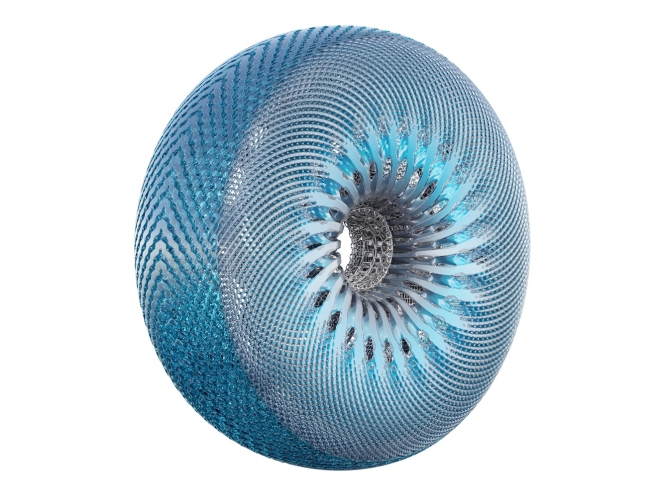
Hankook Tire is advancing its future mobility leadership through strategic open innovation and collaborative design projects. This effort was showcased at the company’s recent Design Innovation Day 2025, held at its Pangyo Technoplex headquarters. The event serves as a platform to present new solutions integrating sustainability, innovation and design while reinforcing partnerships with global technology leaders.
A major focus was the unveiling of two key outcomes from Hankook’s ongoing Design Innovation Project. The first was ‘Sustainable Concept Tyre’, an embodiment of the company’s ESG vision. Developed using advanced 3D printing technology, it is constructed from renewable and recycled materials. Its distinctive organic design was realised in collaboration with Harvestance using specialised engineering software.
The second reveal was the WheelBot 2, a multi-directional mobility platform developed with robotics startup CALMANTECH. This advanced robotic wheel system, equipped with tri-axial spherical tyres, demonstrates new possibilities for movement. Its potential was illustrated through a live demonstration of the PathCruizer, a two-seater pod concept powered by the WheelBot technology.
Beyond product reveals, the event highlighted Hankook’s commitment to knowledge sharing, featuring a presentation on 3D printing advancements from LG Electronics. These collaborations are central to Hankook’s strategy of strengthening its technology leadership. Since 2012, the company has partnered with world-renowned design universities and technology firms, consistently earning prestigious international design awards and solidifying the premium stature of its global brand.
CEAT Cuts Tyre Prices Across Portfolio Following GST Rate Reduction
- By TT News
- September 12, 2025
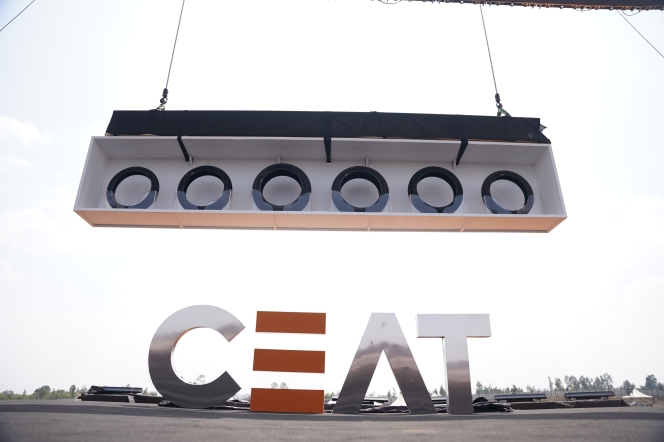
Indian tyre maker to pass full benefit of tax cuts to customers from 22 September
CEAT Limited said on Thursday it would reduce prices across its entire tyre range following the Indian government’s decision to cut goods and services tax (GST) rates on tyres, with the full benefit being passed on to customers.
The Mumbai-based tyre manufacturer said new prices would take effect from 22 September, covering commercial, agricultural, passenger vehicle and two-wheeler segments.
India’s 56th GST Council meeting approved significant reductions in tax rates for the tyre industry. GST on new pneumatic tyres was cut to 18% from 28%, whilst tractor tyres and tubes will attract a reduced rate of 5%.
“We thank the Government of India and the GST Council for their timely and progressive decision to rationalise tax rates in the tyre sector,” said Arnab Banerjee, Managing Director & CEO of CEAT Limited.
“The reduced GST slabs will greatly benefit the tyre industry and consumers alike. Not only will it lower the cost of owning and operating a vehicle for customers across various segments, but by making tyres more affordable to replace, it will also make our roads safer.”
Banerjee added the move would “spur formalisation and greater compliance, while also fostering sustainable growth in the sector.”
The GST rate cuts represent a significant policy shift for India’s automotive sector, where high taxation has been a longstanding concern for manufacturers and consumers.
Yokohama Rubber Recognised As ‘DX Certified Business Operator’ By Japan’s METI
- By TT News
- September 12, 2025
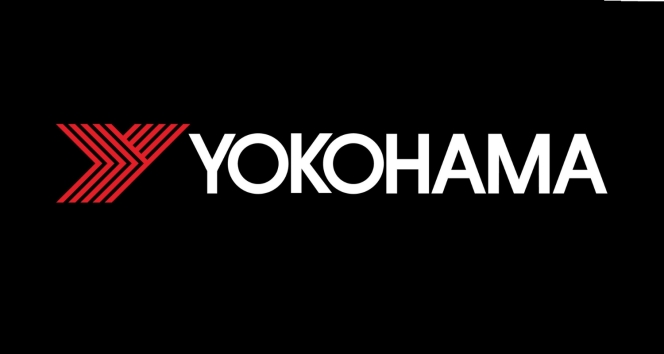
The Yokohama Rubber Co., Ltd. has been officially recognised as a DX Certified Business Operator by Japan's Ministry of Economy, Trade and Industry (METI). The designation, which was granted on 1 September 2025, identifies companies that are thoroughly prepared for digital transformation as outlined by the Digital Governance Code.
This certification acknowledges Yokohama Rubber's comprehensive strategy for digital transformation, which is built on three core objectives: advancing business strategy, contributing to sustainability and reinforcing its IT infrastructure. Central to this effort is the company's proprietary AI framework, HAICoLab (Humans and AI ColLaborate), which drives group-wide digital initiatives. These include improving productivity, innovating processes, developing digital talent and building a global cloud-based IT system. The certification confirms that the company's efforts not only meet METI's stringent criteria but also demonstrate appropriate disclosure of information to its stakeholders.
Moving forward, the company said it will continue to leverage data from its entire value chain to adapt to a dynamic business environment. The company aims to enhance customer value, pursue sustainable innovation and transform its corporate culture to strengthen its competitive position and ensure long-term growth.



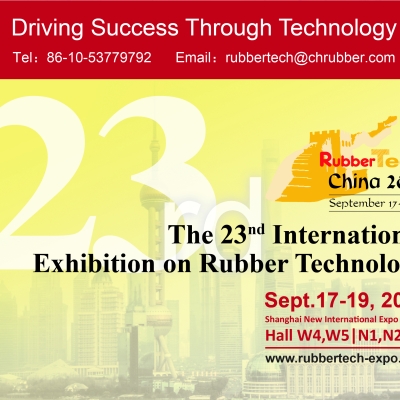


Comments (0)
ADD COMMENT